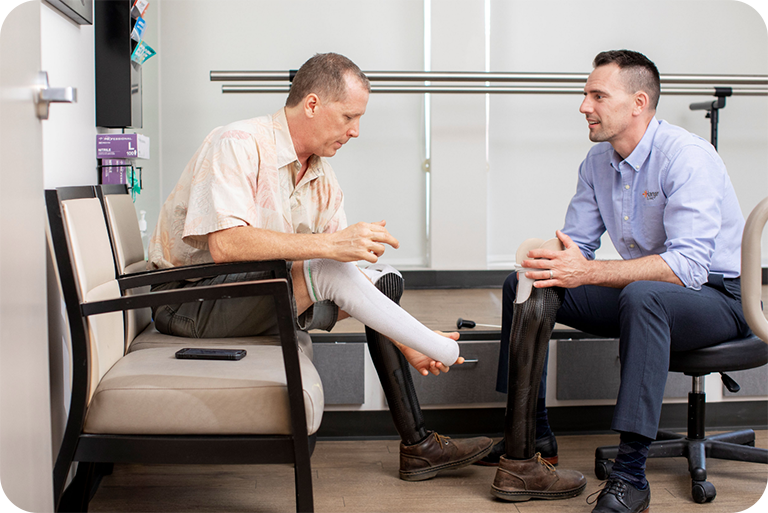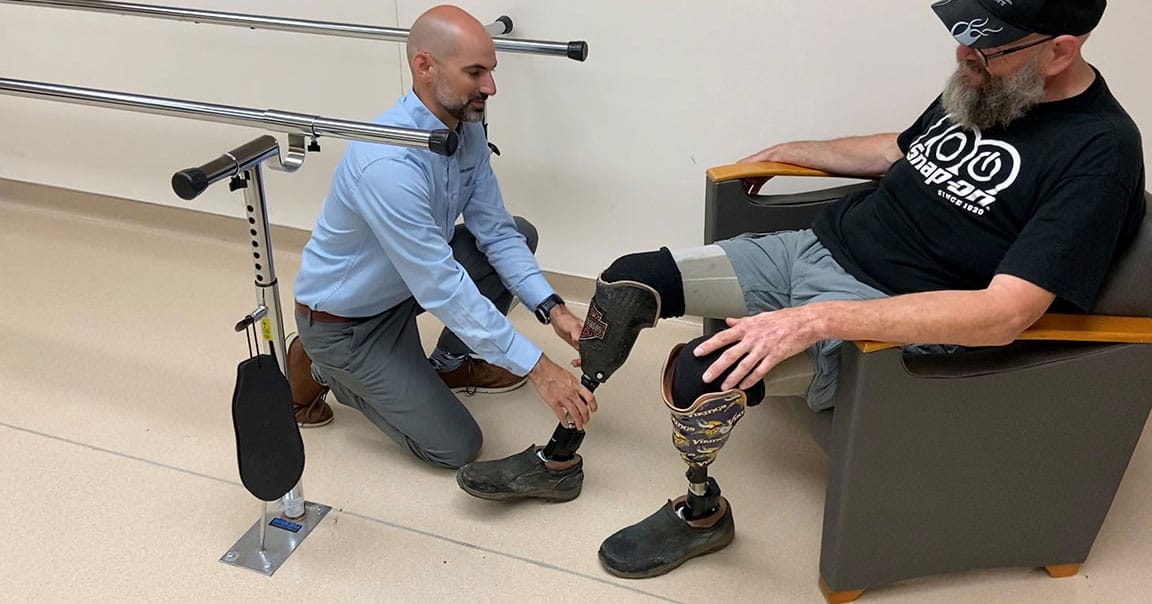We develop lower limb prosthetic devices through an extensive collaboration between our research and development team, clinical experts, patient insight groups and customers. Our ultimate goal is to find prosthetic solutions that can help better the lives of all lower limb amputees.
The Prosthetist Matches the Amputee with the Best Prosthetic Device
A prosthetic limb is an extension of the human body. Each person has different levels of physical abilities, goals and levels of lower limb loss.
The prosthetist will prescribe the most appropriate components. Everyone has a different residual limb as a result of their surgery and medical history. Each residual limb is unique. The prosthetist will design the most appropriate socket using the most appropriate interface materials and prosthetic components for the wearer.
A prosthetist talks with the amputee, the family and/or friends about the different types of prosthetics available and will recommend certain devices that they think would fit the patient's lifestyle and personal goals the best. They are able to create custom prosthetics for each patient.
The goal being to return to as close to their pre-amputation activity as possible.

Individual prostheses will differ depending on the level of amputation and a person’s physical abilities.
Understanding Prosthetic Limbs
Whether you are a new amputee or have lived with amputation for awhile, prosthetic technology can be overwhelming. We explain some of the technology behind today’s prosthetics and how Blatchford uses the natural working of the human body to influence the design of our products.
Resources for Amputees
These useful links and guides cover everything from care of your prosthetic to living as an amputee.
- Residual Limb Care
- Caring for your Lower Limb Prosthesis
- How to Put On Your Prosthesis
- Residual Limb Socks
- Wearing Different Shoes and Heel Heights
Did You Know?
- Lower limb amputees can face health issues long after amputation.
- Lower limb amputees have 2-3x increased risk of osteoarthritis in the knee or hip compared to the general population.
- 61% of lower limb amputees experience moderate to severe back pain within 2 years of amputation.
- Blatchford believes long term musculoskeletal health depends on the replication of natural limb movement.


